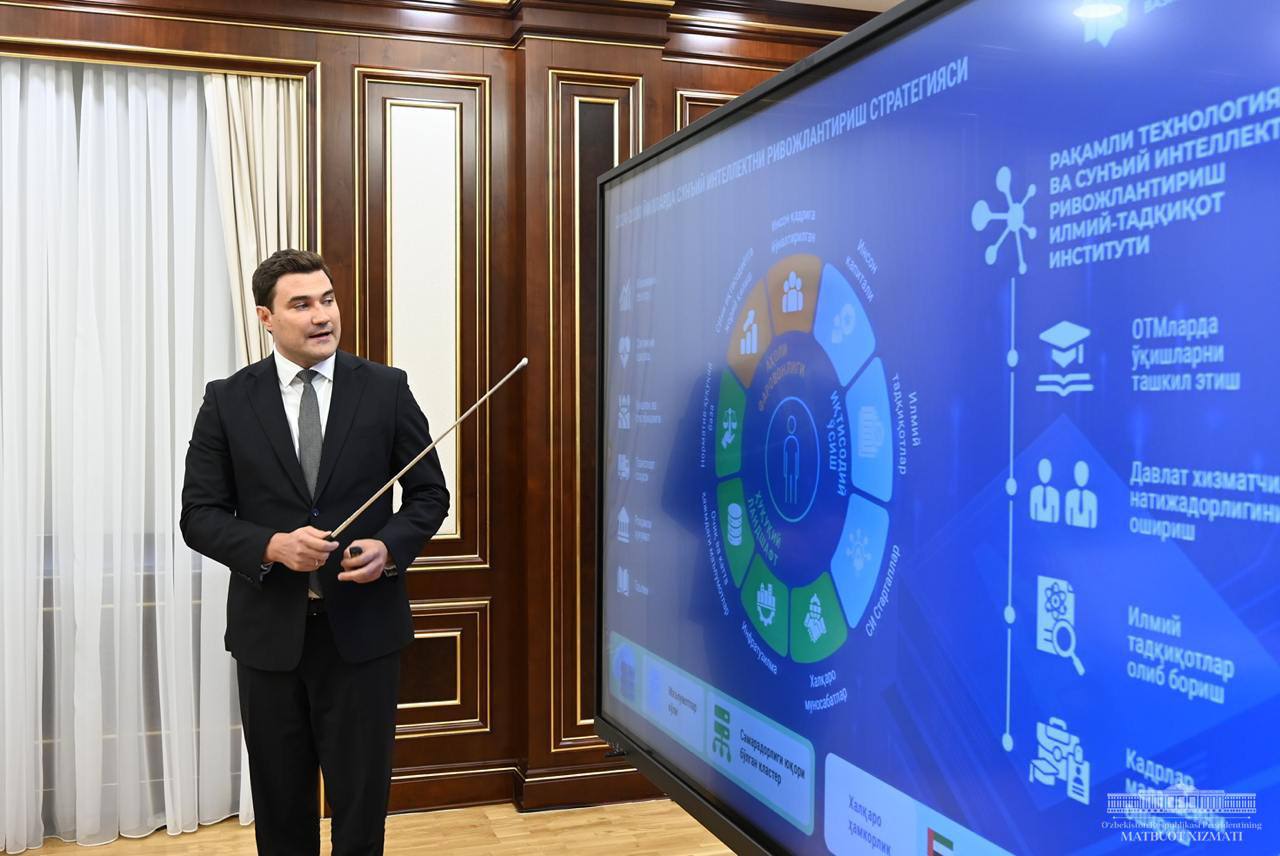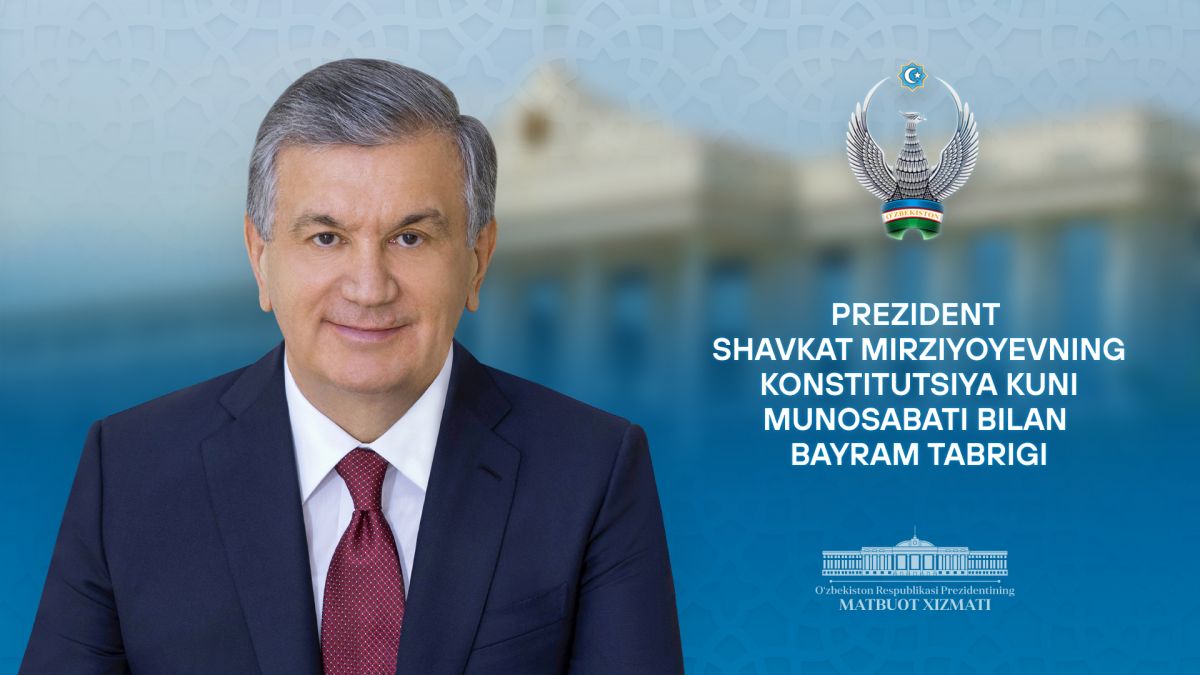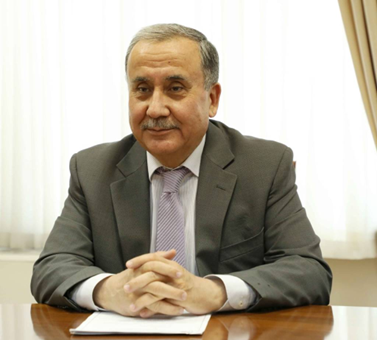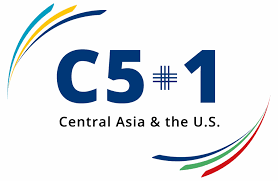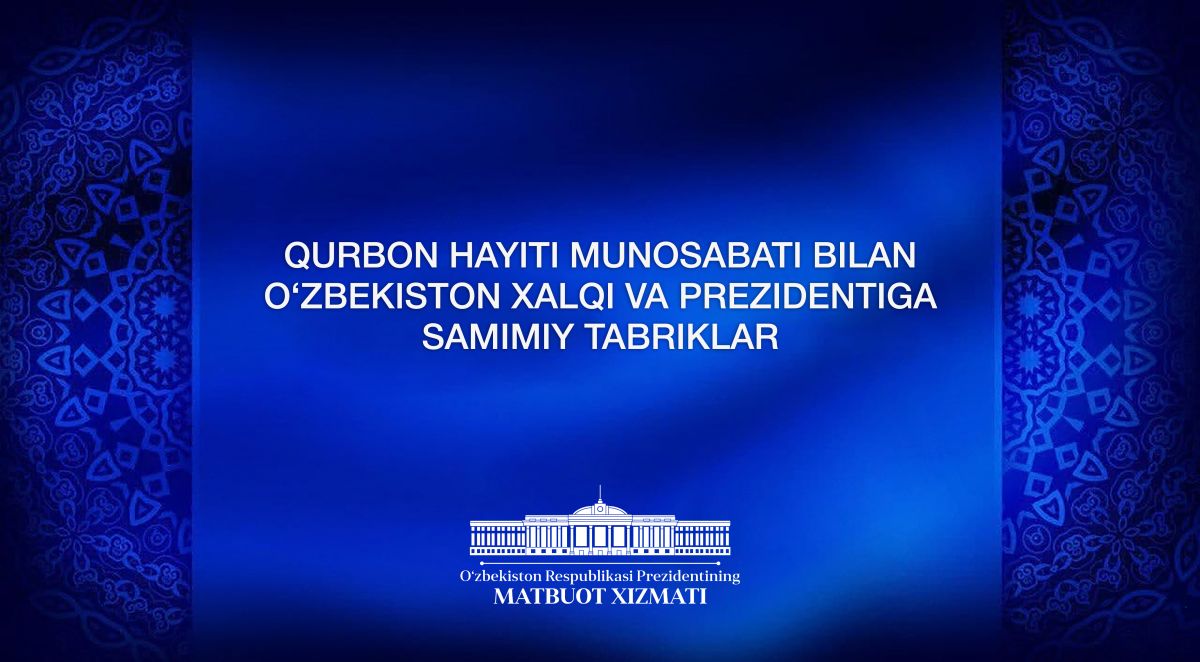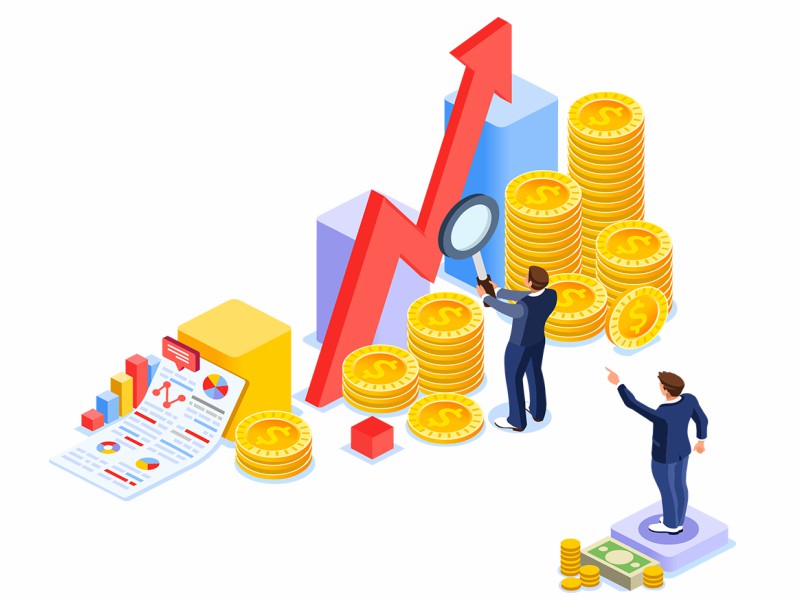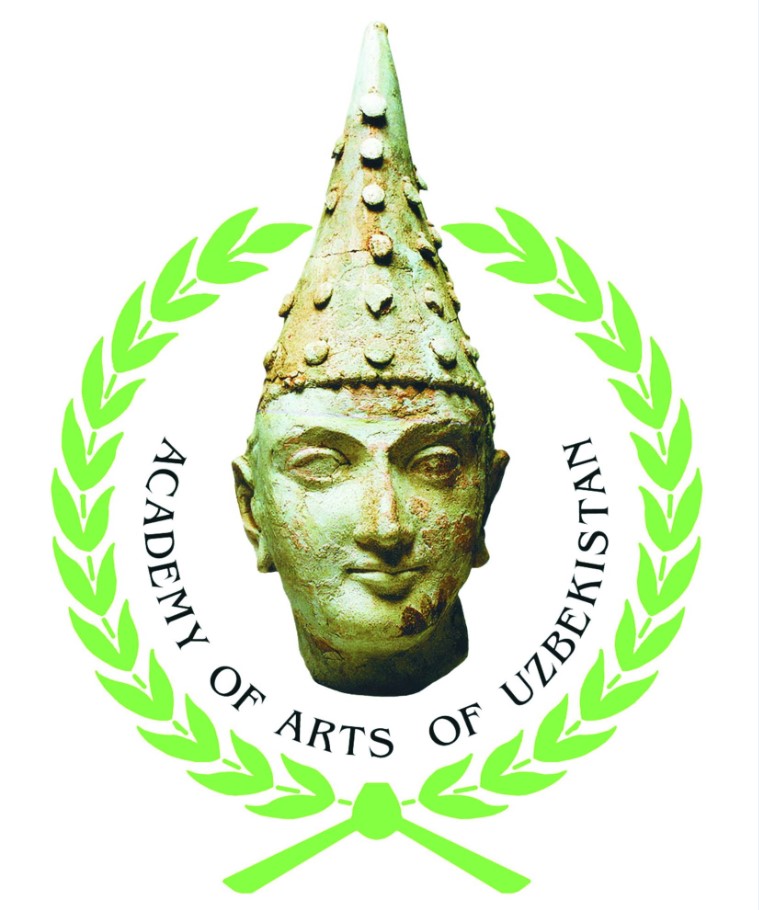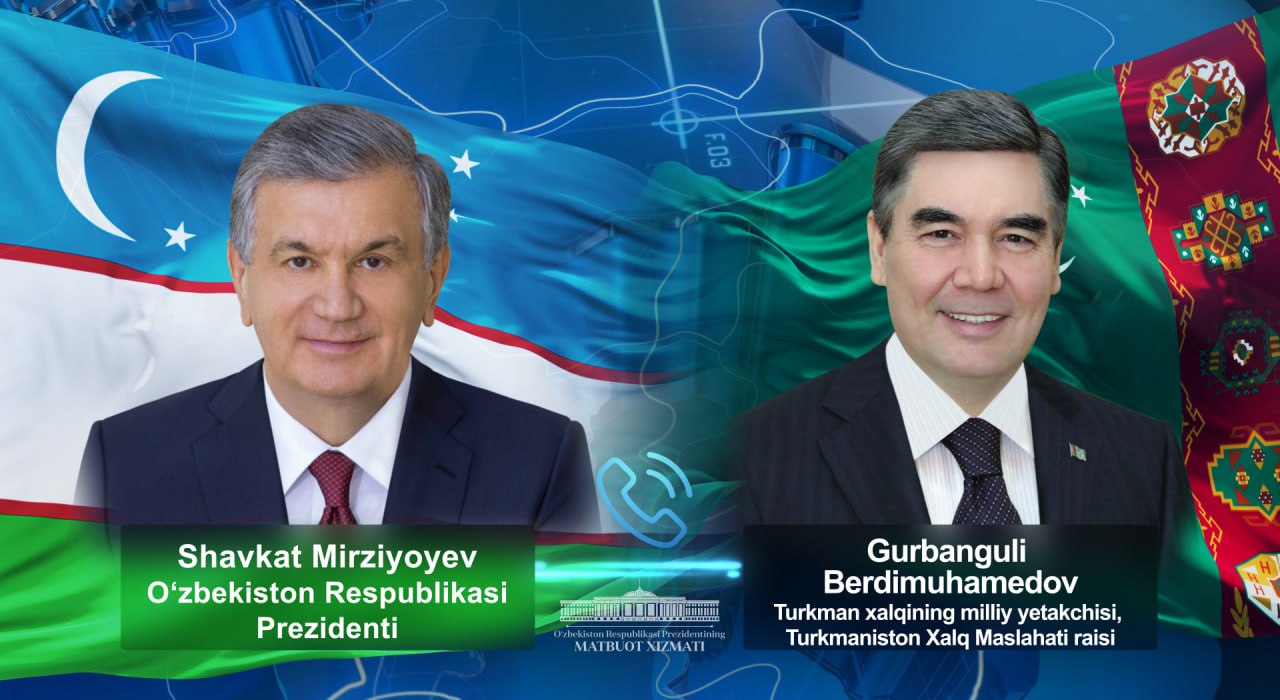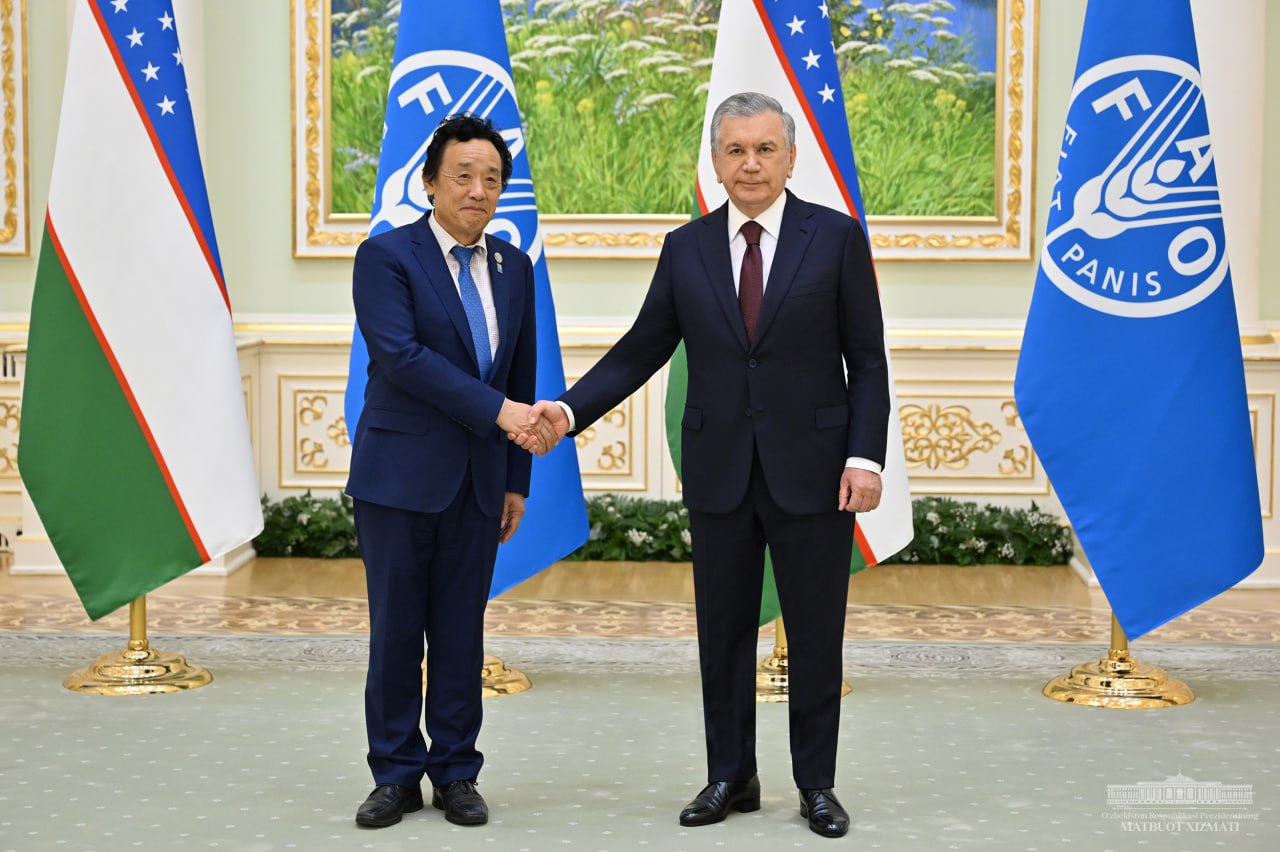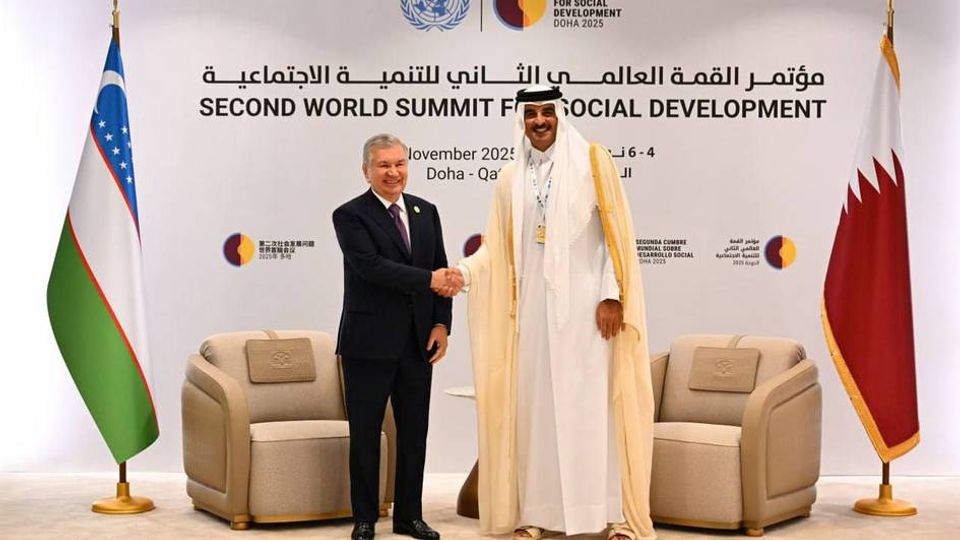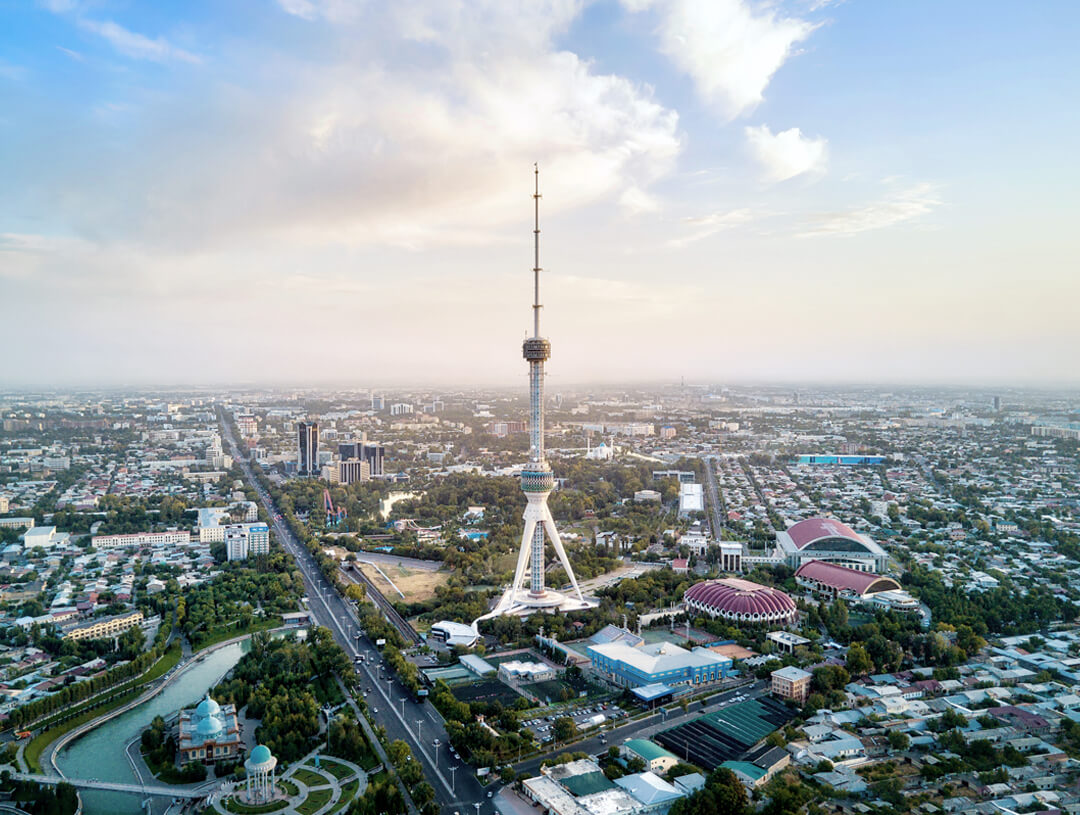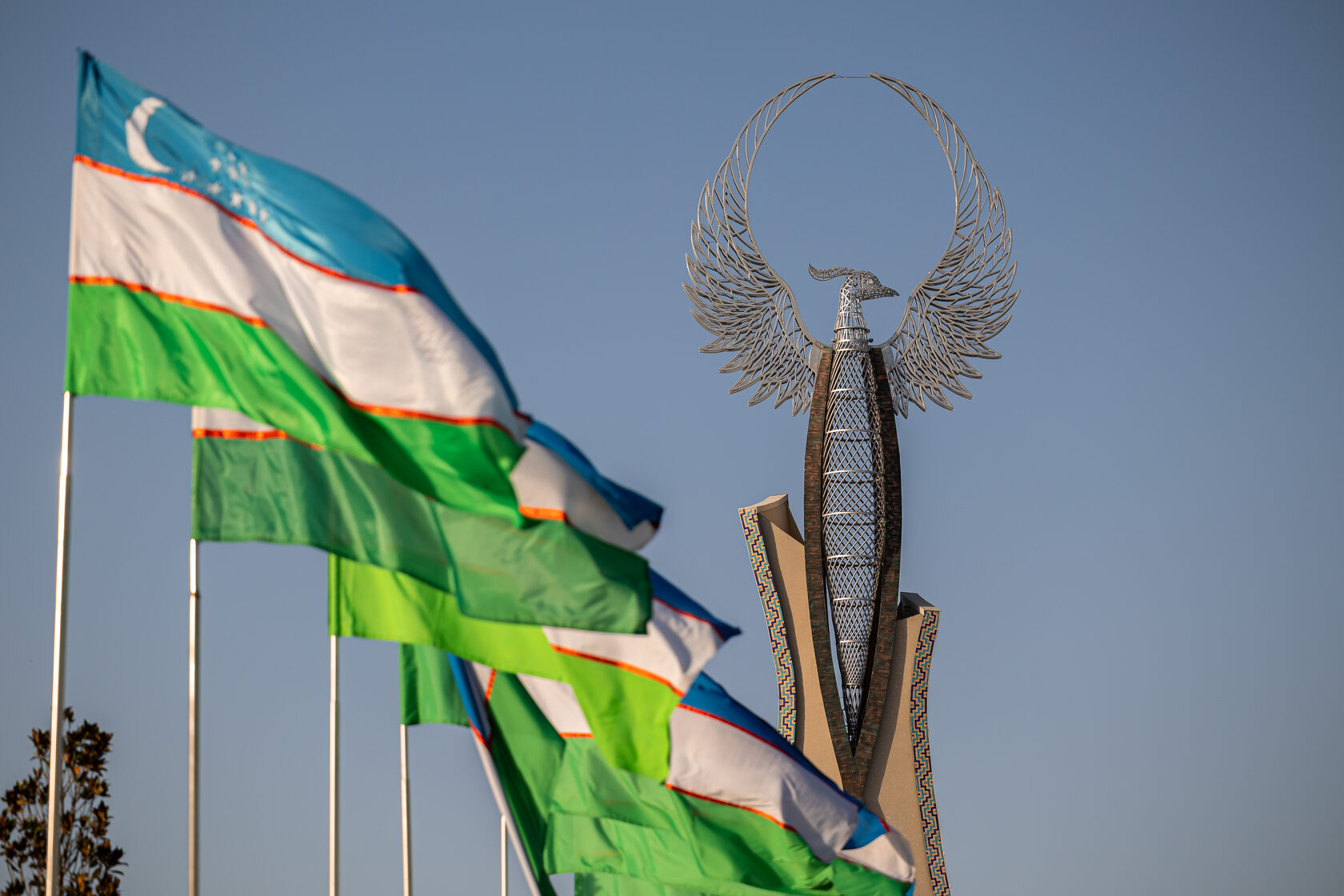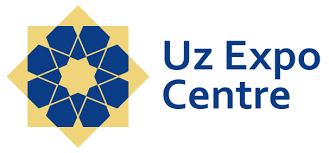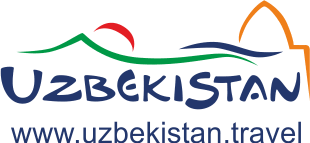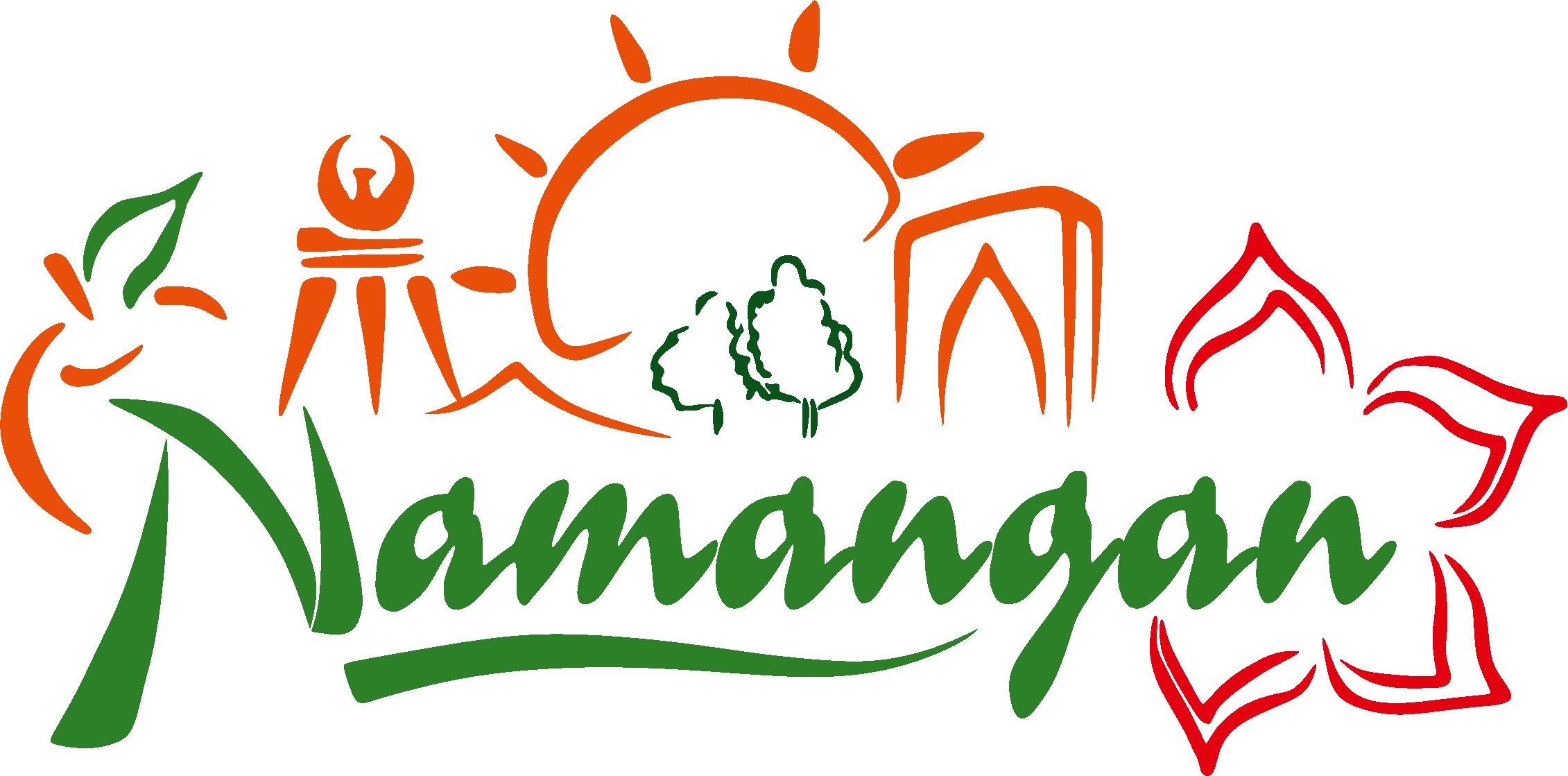Phone
Consular Issues
Phone
Uzbekistan news
We recommend
Presentation of measures for the development of artificial intelligence technologies and startup projects was held
📅 14.08.2024
On August 13, President Shavkat Mirziyoyev familiarized himself with a presentation on measures to develop artificial intelligence technologies and IT startups.
Information technologies are developing rapidly in our country and are being introduced into all spheres. As a result, the volume of digital services exceeded 21 trillion soums only in the past period of this year, and by the end of the year it is expected to reach 43 trillion soums. Export of services of the sphere amounted to 367 million dollars. The number of IT park residents increased by 577 and exceeded 2 thousand. The number of young people working in them reached 32 thousand.
This year, more than 100 digitalization projects are being implemented in health care, energy, transport, education, agriculture, water management, construction and others.
Times are changing rapidly. Artificial intelligence and digital technologies are penetrating into all spheres. A number of projects have also been launched in this direction in our country.
For example, “My ID” and “UzFace” solutions have been implemented in more than 70 organizations, banks, marketplaces and payment systems, and the possibility of remote biometric identification of 10 million users has been created. “Uzbekcosmos” with the help of artificial intelligence identified about 43 thousand cases of illegal use of subsoil and unauthorized construction.
The presentation considered measures to develop artificial intelligence technologies in such areas as health care, agriculture, banking, tax, customs.
It was noted that first of all it is necessary to create a legislative base for artificial intelligence. The task was set to develop a strategy for the introduction of artificial intelligence and a two-year program of projects. The Center for Artificial Intelligence Technologies was assigned to be created.
In particular, the need to expand the application of artificial intelligence in banking and finance, training of specialized personnel and professional development of employees was emphasized.
At present, the personnel on artificial intelligence is trained in 4 universities. There is a need for 600 specialists in big data processing and language models. This number will increase many times in the coming years. Taking this into account, the importance of training specialists corresponding to the needs in terms of industries was emphasized.
All leading IT companies of the world started their activities from a startup. We are also taking the first steps in this direction. Last year, the volume of venture investments attracted in such projects amounted to 134 million dollars.
The head of state emphasized that it is time to create broad conditions for venture investments to finance startup projects. In this regard, instructions have been given to develop the startup ecosystem and introduce venture capital financing mechanisms.
Festive greetings to the people of Uzbekistan
📅 08.12.2024
Dear compatriots!
I cordially congratulate you, all our multinational people with the Constitution Day of the Republic of Uzbekistan celebrated on December 8.
Undoubtedly, this year we all feel the significance of this holiday especially deeply. After all, above all, it takes place in the context of historic transformations in the political-legal, socio-economic and spiritual spheres of our life.
It should be emphasized once again that the elections to the Oliy Majlis and local Kengashes, held in the spirit of open and competitive contest on October 27 this year, became an important step towards the implementation of our updated Fundamental Law. As a result of the elections, which vividly demonstrated the high political culture, unity and cohesion of our hardworking and tolerant people on the path of building the New Uzbekistan, a new system of representative power has been formed in the country. Its constitutional rights and powers have been strengthened and its responsibility has increased manifold.
One more important aspect: we have moved from the practice of the recent past, when khokims were simultaneously in charge of local councils, to a new system in which, for the first time, councils are headed by chairmen elected among deputies.
The transfer of more than 30 powers of khokims to local councils testifies to an even broader establishment of the principles of democracy in our society.
In accordance with the constitutional provision that the people are the only source of state power, we will resolutely continue our reforms aimed at expanding the powers of the Parliament and local Kengashes, further increasing their activity, creating the necessary conditions for effective activity, in short, turning them into the true voice of the people.
Dear friends!
Large-scale measures are taken in the country for consistent implementation of the priority principles of ensuring human rights, interests and dignity enshrined in the Fundamental Law.
Thanks to the selfless labor of our people, in recent years the national economy has doubled, the per capita income has reached 3 thousand dollars, the poverty rate has decreased from 23 to 11 percent, the coverage of preschool education has exceeded 74 percent, higher education - 39 percent, and this is undoubtedly a historic result.
In order to dynamically continue the reforms, to apply in practice the norms of the Constitution in the new edition, the issues of entrepreneurship development and, on this basis, increasing the population's income, strengthening the atmosphere of mutual respect and harmony in families and mahallas, and comprehensive support for representatives of the older generation, women and youth will continue to be at the center of our attention.
The Fundamental Law stipulates that Uzbekistan is a social state, therefore, further improvement of cities and villages, construction of new residential buildings, health care, education, culture, art and sports institutions, modernization of road and communication networks, strengthening of targeted social protection will be of paramount importance for us. In particular, the priority task is to increase twofold the amount of funds allocated to the health sector, transition to a health insurance system and provide the population with fully guaranteed medical services.
Within the framework of programs in the field of education, we will bring the coverage of higher education to 50 percent in the coming years. In 2025 alone, 4 trillion soums will be allocated from the state budget for the repair of existing kindergartens and construction of new kindergartens and schools.
Another important area is support for those in need of social protection, for which it is planned to allocate a total of 46.5 trillion soums and lift 1 million citizens out of poverty.
We will also raise to a new level the work on creating even more favorable conditions for persons with disabilities, their socialization, and in general on ensuring inclusiveness in society. Necessary measures will also be taken to reform the pension system.
As you know, the new version of the Fundamental Law for the first time enshrines the rights of citizens in the sphere of ecology, emphasizing the state's obligations to protect the environment and maintain the ecological balance.
We have declared 2025 the Year of Environmental Protection and Green Economy in the country and have set clear objectives in this field. I am confident that this will serve as an important basis for implementing the relevant constitutional norms and principles.
I take this opportunity to urge you, dear compatriots, all our people to take an active part in the development and implementation of the State Program of the coming year.
We have no right to forget that the protection of nature is the protection of the humans, our future. We must protect our priceless wealth - fertile fields, clean springs, rivers and lakes, mountains and plains, create new gardens and parks, green territories, so that our motherland Uzbekistan becomes even more beautiful, and future generations live in a free and prosperous country.
Dear compatriots!
Our Constitution has always been and remains a reliable guarantor of strengthening national independence, preserving peace and stability in the country, interethnic friendship and harmony, ensuring the irreversibility of the ongoing reforms.
We are proud of our Fundamental Law - a vivid symbol and practical embodiment of the legal consciousness and will of the people. I believe that studying every article, every norm of this unique legal document, showing respect for them should become a sacred duty and a life principle for all of us.
I am convinced that by working in good faith, recognizing our responsibility, we will be able to further increase the effectiveness of the reforms carried out and will definitely achieve the great goals before us.
Once again I sincerely congratulate you, dear compatriots, with Constitution Day, wish you all health, peace and prosperity to your families.
May the authority and glory of our Motherland grow!
May the people of Uzbekistan - the creator of all our achievements - be happy!
Shavkat Mirziyoyev,
President of the Republic of Uzbekistan
Uzbekistan’s Priorities in the Organization of Turkic States: A Factor Ensuring Sustainable Development of Turkic Countries
📅 08.10.2025
The evolution of the Organization of Turkic States (OTS) has attracted particular attention from the international expert community, especially in the context of sustainable development, where Uzbekistan’s accession in 2019 became a catalyst for creating new opportunities for joint progress among Turkic countries.
Originally established on October 3, 2009, as the Cooperation Council of Turkic-Speaking States, the organization has undergone significant institutional evolution and was officially renamed the Organization of Turkic States at the 8th Summit in Istanbul on November 12, 2021. This decision reflected not only the deepening interaction among member states but also their shared aspiration to develop a collective approach to contemporary risks and challenges related to the sustainable development of the Turkic world—a role in which Uzbekistan soon assumed a prominent position.
Uzbekistan’s policy within the OTS has been primarily manifested in the economic sphere, where deeper integration has become not only a sign of growing mutual trust but also a practical foundation for jointly ensuring stability and sustainable development.
By 2024, mutual trade among OTS member states exceeded $45 billion, and the combined GDP of the five member states reached $1.9 trillion, demonstrating increasing economic interdependence. According to data from the Center for Economic Research and Reforms (CERR), Uzbekistan’s trade turnover with OTS countries grew from $3.34 billion in 2016 to $9.4 billion in 2023, reaching $10 billion by 2024—nearly triple the figure from seven years earlier.
This dynamic growth in economic ties has not only strengthened mutual interest among OTS countries in regional stability but also laid a solid foundation for a new approach to security—one actively promoted by Uzbekistan in its foreign policy.
An analysis of initiatives put forward by President of Uzbekistan Shavkat Mirziyoyev at OTS summits confirms Tashkent’s consistent and systematic approach to strengthening regional security. In place of the traditional military-political dimension, Uzbekistan advocates a model in which security is understood as the outcome of sustainable development, interconnectedness, and long-term, structured cooperation.
This approach is embodied in the following strategic directions, covering key aspects of contemporary security:
First, Uzbekistan was among the first in the region to propose cooperation in responding to systemic threats. During the COVID-19 pandemic (April 2020), Tashkent proposed establishing a permanent mechanism for epidemiological surveillance, a coordination group under the OTS Secretariat, and partnership arrangements with the World Health Organization (WHO).
Following the earthquake in Türkiye (March 2023), Tashkent initiated the creation of an OTS platform for practical cooperation on disaster prevention and response, as well as the development of a multilateral agreement on risk reduction and the establishment of a Natural Disaster Monitoring Center in Tashkent.
All these measures aim at early warning, reducing vulnerability, and enhancing collective resilience—key elements of preventive security.
Second, Uzbekistan advances sustainable development through deeper economic interconnectivity.
In transport, Uzbekistan proposed joint use of the multimodal corridor “Tashkent–Karakalpakstan–Aktau–Baku–Tbilisi–Kars–Istanbul,” implementation of a “single window” system and “green corridors” along the Trans-Caspian route, and full digitalization of road transport through the eTIR system. In 2022, Uzbekistan and Azerbaijan became the first countries to successfully carry out a transport operation using electronic eTIR carnets.
In food security, Uzbekistan proposed developing a multilateral agreement on supply systems and cooperation with the Food and Agriculture Organization (FAO).
In the environmental sphere, Tashkent proposed establishing a Turkic environmental protection body headquartered in the Aral Sea region, forming an Environmental Council, and adopting a “Turkic Green Energy Transition” concept.
All these initiatives create an infrastructure-economic foundation for security, reducing dependence on external shocks and strengthening regional autonomy.
Third, Tashkent’s key contribution lies in promoting the institutionalization of the OTS. At the Samarkand Summit (November 2022), Uzbekistan proposed creating dedicated ministerial-level committees on energy, IT, healthcare, and other sectors.
Later, Uzbekistan initiated hosting the headquarters of strategically important OTS bodies in Tashkent, including the Emergency Response Center, the Council of Railway Administrations, the Turkic Investment Bank, the Research Center for Human Capital Development, and the Academy of Space Research.
During Uzbekistan’s OTS Chairmanship (2022–2023), over 100 events were held, and new cooperation platforms were established, including the Organization of Trade Unions of Turkic States and the Institute for Drought Prevention.
These measures enhance joint preparedness and rapid response capabilities to contemporary challenges, strengthen trust among member states, and support sustainable development.
Fourth, alongside deepening cooperation in humanitarian, economic, and legal spheres, Uzbekistan consistently develops avenues of interaction related to coordinating responses to threats to regional stability.
For example, at the Shusha Summit in July 2024, Uzbekistan proposed formulating unified OTS approaches to the Afghan issue in light of the new regional realities. Such initiatives reflect Tashkent’s commitment to consolidating foreign policy positions and developing a coordinated strategy on the most sensitive issues of regional stability.
Thus, Uzbekistan’s initiatives within the OTS form a comprehensive, prevention-oriented model of sustainable development, in which humanitarian, economic, environmental, and political components are viewed as interdependent. Tashkent’s approach not only aligns with current trends in international relations but also creates conditions for strengthening the strategic autonomy of the Turkic world amid global fragmentation.
However, it should be noted that this model is not developed in isolation. On the contrary, it is organically complemented by the OTS’s external openness and its aspiration to integrate into the international architecture of relations through cooperation with key global and regional institutions. This helps avoid duplication, enhances the legitimacy of OTS initiatives, and aligns them with international standards.
In this process, Uzbekistan plays a significant role by consistently promoting synergy between the OTS and multilateral platforms, particularly in epidemiological, environmental, and humanitarian areas.
The OTS maintains especially close cooperation with the United Nations and its specialized agencies. Uzbekistan’s 2021 initiative to establish a Turkic environmental body under UN auspices, headquartered in the Aral Sea region, directly integrates regional efforts into the global environmental agenda.
Proposals for cooperation with the UN Food and Agriculture Organization (FAO) (2022) and collaboration with the World Health Organization (WHO) (2020) further demonstrate the desire to leverage the UN’s expertise and institutional capacity to implement homegrown security mechanisms.
Additionally, Tashkent initiated partnerships with the UN Office for Disaster Risk Reduction (UNDRR) and the Global Facility for Disaster Reduction and Recovery (GFDRR) in the context of establishing the Natural Disaster Monitoring Center (2023), underscoring the OTS’s commitment to the principles of sustainable development and preventive security enshrined in the UN 2030 Agenda.
Simultaneously, the OTS is expanding its international presence: in 2024, the organization obtained observer status in the Economic Cooperation Organization (ECO), submitted similar applications to the UN and the Organization of Islamic Cooperation (OIC), and strengthened ties with the EU and OSCE through its European office in Budapest. At the Budapest Informal Summit (May 2025)—the first ever organized by an observer country—the Budapest Declaration was adopted, reaffirming the OTS’s commitment to combating terrorism, cyber threats, and organized crime.
This foreign policy orientation is also confirmed by assessments from international analytical circles.
According to an analytical report by the Global Security Research Center at the Geneva Centre for Security Policy (GCSP), the OTS demonstrates a unique model of regional cooperation that combines cultural identity with pragmatic measures to reduce vulnerability to transboundary threats. Experts from the “AIR Center” (Azerbaijan) note that for Central Asian countries and Azerbaijan, the OTS has become a strategic shield against external threats and a platform for asserting independence.
Thus, the OTS not only strengthens the collective resilience of its member states to external challenges but also creates a space for developing joint approaches to implementing projects aimed at the sustainable development of Turkic countries.
In this regard, Uzbekistan consistently promotes a comprehensive, prevention-oriented model for addressing risks and factors undermining sustainable development, in which traditional threats are complemented by non-traditional challenges—from pandemics and natural disasters to destructive ideologies. Particular emphasis is placed on building trust through humanitarian diplomacy, youth initiatives, cultural rapprochement, and institutional cooperation.
In the context of regional stability, Uzbekistan advocates for unified approaches to the Afghan issue, supports counter-terrorism and anti-organized crime efforts, and initiates mechanisms for collective crisis response.
The adoption of the Charter of Turkic Peace at the 11th OTS Summit in Bishkek, along with President Shavkat Mirziyoyev’s proposal at the same forum to sign a Treaty on Strategic Partnership, Eternal Friendship, and Brotherhood among Turkic States, became pivotal factors in shaping a long-term architecture of trust and shared responsibility.
Overall, Uzbekistan’s initiatives within the OTS represent a comprehensive strategy aimed at creating an alternative model for ensuring sustainable regional development, grounded in the cultural-historical commonality and economic interconnectedness of Turkic countries.
Alisher Kadyrov,
the head of the Department of the Institute for Strategic and Interregional Studies under the President of the Republic of UzbekistanUzbekistan in the “C5+1” Platform: Strengthening the Strategic Dialogue with the United States and Central Asian Countries
📅 10.11.2025
Modern Central Asia is becoming a space of sustainable growth and mutual trust. The countries of the region demonstrate a strong commitment to building balanced relations with global partners, prioritizing practical initiatives in trade, energy, transport, and innovation. One of the key formats shaping this new architecture is the “C5+1” platform, which unites the Central Asian states and the United States.
Regional Consolidation: Dialogue Based on Equality and Pragmatism
In recent years, the “C5+1” format has evolved from a diplomatic mechanism into an effective platform for coordination and implementation of joint projects. The latest ministerial meeting in Samarkand, attended by the Minister of Investment, Industry and Trade of the Republic of Uzbekistan, Laziz Kudratov, demonstrated a high level of trust and a shared focus on tangible results.
Key topics on the Samarkand agenda included food security, climate resilience, development of green and digital economies, diversification of transport corridors, and deepening industrial cooperation.
Following the meeting, memorandums were signed on decarbonization and digitalization of customs procedures - a step that paves the way for harmonized trade rules, easier exports, and increased investment inflows into the region.
Central Asia: From Fragmentation to an Integrated Economic Space
The figures speak for themselves: the total foreign trade turnover of Central Asian countries has reached $220 billion, almost doubling since 2017, while mutual investments have grown 5.6 times. The region’s combined GDP increased by 40% over the past five years to exceed $406 billion.
These indicators reflect not only growth but also a qualitative shift - from isolated initiatives to a coordinated regional development strategy.
Uzbekistan - Kazakhstan: Industrial and Logistics Core
The Uzbekistan - Kazakhstan partnership exemplifies a new model of integration. Between January and August 2025, mutual trade reached $3.03 billion, up by 15%. Projects exceeding $7 billion are under implementation across engineering, agriculture, construction, and energy sectors. Over 1,100 enterprises with Kazakh capital operate in Uzbekistan, creating jobs and new export niches.
Uzbekistan - Tajikistan: Transport and Energy Bridge
Tajikistan and Uzbekistan are rapidly strengthening railway and energy cooperation. In 2024, cargo traffic between the two countries reached 10 million tons, while regular passenger flights and a joint investment company with a $100 million capital were launched. These are not just numbers - they represent an architecture of trust that enables joint industrial and agricultural clusters.
Uzbekistan - Turkmenistan: Corridors of Growth
Cooperation with Turkmenistan is expanding in energy, logistics, and industry. In 2024, bilateral trade exceeded $1.14 billion, and the Shavat - Dashoguz border zone is evolving into a hub of trade and joint manufacturing. A localization project for repairing Turkmen wagons in Andijan is a vivid example of practical industrial integration.
Uzbekistan–Kyrgyzstan: A “Roadmap” for the Future
The interstate program until 2030 and the Border Regions Council ensure steady progress. From January to August 2025, trade turnover approached $600 million, while Uzbekistan’s exports grew by nearly 80%. New logistics routes are being developed to reduce transport costs and enhance business competitiveness.
“C5+1” as a Catalyst for Development
Participation in the “C5+1” framework gives regional integration new depth - aligning national interests with global sustainability trends.
The United States and regional partners are building long-term cooperation in green energy, resilient supply chains, infrastructure modernization, and human-capital development.
Special attention is given to unified standards for digital trade, environmental management, and logistics technologies, making Central Asia a vital link in Eurasian value chains.
Benefits for the Region and Uzbekistan
For Central Asia, the “C5+1” format provides:
- Investment and technology: opportunities to attract foreign partners for renewable energy, raw-material processing, and digital transformation;
- New markets: expanded export opportunities through unified customs and trade standards;
- Energy security: development of interconnected grids and energy-storage infrastructure;
- Human capital: education, internships, and exchanges with leading global companies.
For Uzbekistan, the advantages are clear:
- Expanded export potential through access to new transport routes;
- Technology localization and industrial partnerships with neighbors;
- Institutional stability and strengthened position as a regional integrator;
- Inflow of direct investment supported by uniform rules and a stable macroeconomic environment.
Conclusion: From Geography to the Economy of the Future
Central Asia is steadily transforming from a “crossroads of geography” into a region of synergy. The “C5+1” format has become a framework connecting the efforts of regional and global partners into a unified development strategy - based on trust, mutual benefit, and sustainable growth.
For Uzbekistan, participation in this platform is not merely a foreign-policy choice, but a practical instrument for achieving its long-term national goals - industrialization, export growth, and improved living standards.Sincere congratulations to foreign partners
📅 16.06.2024
In connection with the advent of Eid al-Adha, the holy holiday of Eid al-Adha, which embodies such noble values as mercy, generosity, humanism and harmony, and promotes an atmosphere of mutual respect and tolerance in society, President of the Republic of Uzbekistan Shavkat Mirziyoyev has received heartfelt congratulations from the heads of foreign States and governments, respected public and religious figures and heads of leading international and regional organizations.
In their messages, they express to the head of our state and the multinational people of Uzbekistan words of sincere respect, wishes for peace, well-being and prosperity, as well as reaffirm their commitment to the full strengthening of relations of friendship and multifaceted cooperation.
Congratulations, in particular, were sent to:
The Minister, Two Holy Shrines, King Salman bin Abdulaziz Al Saud of Saudi Arabia;
Crown Prince Muhammad bin Salman bin Abdulaziz Al Saud, Chairman of the Council of Ministers of Saudi Arabia;
President Recep Tayyip Erdogan of the Republic of Turkey;
Abdelfattah Al-Sisi, President of the Arab Republic of Egypt;
President of the Republic of Kazakhstan Kassym-Jomart Tokayev;
President of the Kyrgyz Republic Sadyr Zhaparov;
President of the Republic of Tajikistan Emomali Rahmon;
President of Turkmenistan Serdar Berdimuhamedov;
National leader of the Turkmen people, Chairman of the Khalk Maslakhaty of Turkmenistan Gurbanguly Berdimuhamedov;
Ilham Aliyev, President of the Republic of Azerbaijan;
Sheikh Muhammad bin Zayed Al Nahyan, President of the United Arab Emirates;
Vice President, Prime Minister of the United Arab Emirates, Ruler of the Emirate of Dubai, Sheikh Mohammad bin Rashid Al Maktoum;
Sheikh Mansour bin Zayed Al Nahyan, Vice President, Deputy Prime Minister, Minister of Presidential Affairs of the United Arab Emirates;
Shaikh Seif bin Zayed Al Nahyan, Deputy Prime Minister, Minister of Interior of the United Arab Emirates;
Turki bin Muhammad bin Fahd bin Abdulaziz Al Saud, Minister of State and member of the Council of Ministers of Saudi Arabia;
Emir of the State of Kuwait Mishaal Al-Ahmad Al-Jaber Al-Sabah;
Crown Prince of the State of Kuwait Sabah Khaled Al-Hamad Al-Muborak Al-Sabah;
King Abdullah II of the Hashemite Kingdom of Jordan;
King Muhammad VI of Morocco;
Abdelmajid Tebboun, President of the People's Democratic Republic of Algeria;
Mahmoud Abbas, President of the State of Palestine;
Secretary General of the Organization of Turkic States Kubanychbek Omuraliev;
Secretary General of the Economic Cooperation Organization, Khusraw Noziri;
Secretary General of the Organization of Islamic Cooperation Hussein Ibrohim Taha;
Sheikh-ul-Islam Allahshukur Pashazade, Chairman of the Caucasus Muslims Board.
Congratulations continue to pour in.
In which sectors of the economy does Uzbekistan attract foreign investment
📅 08.08.2024
The "Uzbekistan 2030" strategy aims to increase the country's gross domestic product to $160 billion and per capita income to $4,000. Achieving this goal solely through the domestic market is not possible; therefore, it is crucial to actively attract foreign investments and increase exports.
The Tashkent International Investment Forum plays a significant role in this effort. In May 2024, the third edition of the forum took place in Tashkent, becoming a significant event for the economy of Uzbekistan and the international investment community. The main objective of the forum was to enhance the inflow of foreign investments and promote economic cooperation between Uzbekistan and other countries.
The forum attracted business representatives, investors, government officials, and international organizations, facilitating dialogue and the signing of major investment agreements. In recent years, Uzbekistan has demonstrated significant growth in attracting investments, and the forum has been an important step in this direction.
In his welcoming speech, the head of state noted that Uzbekistan has attracted over $60 billion in foreign investments in recent years, with approximately $14 billion coming from international financial institutions. These investments have been directed towards social and infrastructure sectors.
The forum has gained incredible popularity, with over 2,500 participants from 93 countries, providing a platform for global dialogue and exchange of investment experiences.
It is important to highlight that the forum garnered attention from international media, with coverage from more than 110 foreign publications in 30 countries, including leading global media outlets such as CNN, Euronews, London Post, and Associated Press.
One of the key events of the forum was the presentation of regional energy projects (the construction of Kambarata-1 HPP and Yavan HPP) to foreign investors. The presentation involved the Prime Ministers of the Republic of Uzbekistan and the Kyrgyz Republic, emphasizing the importance of these projects for the entire region.
As a result of the Tashkent International Investment Forum, agreements were signed totaling $26.6 billion, indicating the high investment attractiveness of Uzbekistan and the success of the forum. For comparison, in 2022, 167 documents were signed at the forum, amounting to $11 billion, demonstrating a significant increase in investment interest in the country.
Specifically, agreements were reached on the implementation of the following major investment projects:
- Saudi Arabian company "Data Volt" will be involved in the construction of urban infrastructure in "New Tashkent" for $1 billion and will establish a "data processing center" based on green technologies for $3 billion.
- Saudi Arabian company "ACWA Power" will implement projects for the construction of a 5 GW wind power plant in the Republic of Karakalpakstan and the creation of 2 GW energy storage devices, with a total investment of $6.2 billion.
- UAE company "Amea Power" will carry out a project to build a 1000 MW wind power plant in the Republic of Karakalpakstan for $1.1 billion.
- "Saudi Tabrid" will undertake the modernization of the heating systems in Nukus, Fergana, and Kuvasay for $750 million.
- Egyptian company "Nile Sugar" will engage in sugar beet cultivation and sugar production in the Jizzakh region for $500 million.
- Chinese company "Shanghai Knud International" will implement a project for the production of textile and sewing products in the Namangan region for $205 million.
- "Wilmar International" (Singapore) will produce food products and confectionery in the Tashkent region for $200 million.
Additionally, agreements were reached with several major global companies, such as "Orascom Investment" (Egypt), "Bonafarm Grup" (Hungary), "Sayar" (USA), "Goldwind," "Sinoma" (China), "Sam Yapi" (Türkiye), "Pasha Development" (Azerbaijan), "Lasselsberger" (Austria), and "Petrosat Chexelsoton" (Iran), for the implementation of new investment projects totaling $6.6 billion.
The event included a rich program of panel sessions, discussions, business breakfasts, and roundtable discussions, focusing on key aspects of economic development. The central theme revolved around the role of the state, investors, and entrepreneurs in supporting small and medium-sized businesses.
During the session on combating corruption, experts emphasized that effective anti-corruption measures are crucial for improving the investment climate. They highlighted that creating a safe and transparent business environment plays a vital role in this process.
"The successful fight against corruption requires a comprehensive approach, including strengthening legislation and increasing the transparency of government actions," stated Akmal Burkhanov, Director of the Anti-Corruption Agency of the Republic of Uzbekistan.
The session on retail trade identified the main challenges and opportunities in the industry. Participants expressed the need for improving tax legislation and simplifying import procedures. They also emphasized the importance of creating conditions for successful adaptation of new brands in the market.
"Thanks to the resolution on reducing customs duties, we have managed to establish fair prices, as in the UK and Kazakhstan," shared Ilya Lyapustin, Sales and Marketing Director of "Tashkent City Mall."
During the business breakfast dedicated to women entrepreneurship, the significant impact of women entrepreneurs on society was emphasized. Speakers presented inspiring examples and strategies for achieving a balance between profitability and social responsibility.
Special attention was given to attracting foreign investments through residency programs.
"In recent years, Uzbekistan has proven itself as an attractive destination for global investors due to its openness to cooperation and prospects in the real estate sector," stated Akram Mukhamatkulov, representative of Henley & Partners.
The roundtable discussion on "Supply Chains and Resilience: Finding Balance in Uncertain Times" addressed the problems and strategies for ensuring the resilience of global supply chains.
"Turkey and Uzbekistan have a strategic partnership, and we can significantly strengthen cooperation by working together," noted Deputy Minister of Trade of Turkey, Sezai Ucharmak.
Experts also emphasized the importance of integrating digital technologies into investment strategies. They highlighted that digitization is not just the future but already a reality, playing a key role in accelerating investment processes and increasing transparency.
The pitch session "IT-PARK Uzbekistan: New Perspectives for Development" presented plans to transform Uzbekistan into a regional hub for information technology by 2030.
Sherzod Shermatov, Minister of Digital Technologies of Uzbekistan, highlighted the significance of recent investments. "Yesterday, we witnessed an important event - the start of the construction of the $5 billion green data center, Data Volt, a major project of direct foreign investment. We are creating a favorable environment for IT companies and launching the 'Zero Risk' program to cover all risks associated with opening and operating offices in Uzbekistan," he noted.
The roundtable discussion on "Connectivity: Reviving the Great Silk Road" brought together international experts and representatives of government bodies to explore opportunities for expanding connections, economic cooperation, and cultural exchange along the ancient Silk Road routes.
The roundtable discussion on "Integrated Urban Planning: Quality Investments, Environmental and Human Comfort" involved leading urban planners, architects, and business representatives discussing approaches to the development of the city of Tashkent. In particular, Vladislav Butenko, Managing Director and Senior Partner at BCG, emphasized the importance of integrating innovative solutions into urban planning to achieve sustainable city development. He stressed the need to consider both economic and social aspects in comprehensive planning, ensuring a balance between them.
The forum played a significant role in attracting investments for various ministries and regions of Uzbekistan. The signed agreements indicate the development of key sectors such as industry, energy, pharmaceuticals, and automotive manufacturing.
One of the major achievements of the forum was the agreement between the Ministry of Digital Technologies, the Ministry of Energy, and IT company Data Volt on the construction of a data center based on green technologies. Experts highlighted the importance of such projects for Uzbekistan. The signing ceremony was attended by Laziz Kudratov, Minister of Investment, Industry, and Trade, and Rajit Nanda, Director of Data Volt.
The third Tashkent International Investment Forum has concluded, but the planned initiatives and signed agreements promise active work in attracting investments and ensuring sustainable development. Uzbekistan has once again confirmed its role as a strategic partner on the international stage, attracting the attention of global investors and contributing to the economic growth of the region.
Tengiz Asanov,
Deputy Head of the Department of the Ministry of Investment, Industry and Trade of Uzbekistan
X TASHKENT INTERNATIONAL BIENNALE OF CONTEMPORARY ART
📅 08.07.2024
ART
The Tashkent International Biennale of Contemporary Art has been held every two years since 2001 with government support. It serves as an open platform for cultural exchange in the visual arts, showcasing the modern creative potential of different countries and discussing current issues in contemporary art.
The theme of the X Tashkent International Biennale of Contemporary Art in 2024 is "Art and World". Conceptually, it explores the relationship between art and modern reality through the works of artists from various countries. This theme prompts reflection on the nature of the modern world: Does it possess integrity? Today, the world is characterized by polar stances, clashes, and numerous challenges related to preservation, ecology, morality, culture, and identity, spanning personal to state levels. Its landscape is shaped by opposition influenced by globalization, geopolitics, technogenic civilization, and artificial intelligence. How does contemporary art reflect on the modern world?
Simultaneously, the X Tashkent International Biennale aims to showcase various trends and new directions in contemporary art to the general public. It seeks to enhance international cultural relations, strengthen the creative dialogue between cultures, and highlight the achievements of different countries in visual art. The Biennale focuses on liberating creative consciousness, demonstrating pluralism in creative exploration, and illustrating the specifics of the postmodern condition in different countries. It addresses the state of intertextuality in modern art and the preservation or disappearance of local traditions in the era of globalization.
The concept of the Biennale is dedicated to displaying a multicultural lifestyle through the prism of contemporary art. The works presented will reflect diverse artistic expressions that uphold humanistic values. The theme provides an opportunity to explore concepts such as ecology, culture, tolerance, modern orientalism, identity, artificial intelligence, technogenic civilization, and the inner world of individuals.
FOR MORE DETAILS: biennale.uzbekistan@gmail.com, +998-71-233-04-27
Curator of the X Tashkent International Biennale of Contemporary Art:
Sukhrob Kurbanov - Art Critic and Art Historian.
Coordinator of the event:
Asya Tuychiyeva - Head of the Department for International Relations, Academy of Arts of Uzbekistan.
The national leader of the Turkmen people congratulated the President of Uzbekistan
📅 24.07.2024The text of the article is in Uzbek language!
The President of Uzbekistan noted the importance of adopting a long-term program of strategic partnership with FAO
📅 06.09.2024
President of the Republic of Uzbekistan Shavkat Mirziyoyev met with Director General of the Food and Agriculture Organization of the United Nations (FAO) Qiu Dongyu on September 5.
The head of the authoritative branch structure of the United Nations system is in Tashkent within the framework of the ongoing International Forum on Food Security and Sustainable Development Goals for Landlocked Countries.
At the beginning of the meeting, the UN High Representative expressed his deep gratitude to the head of our state for supporting the successful holding of the forum, which is attended by representative delegations from more than 30 countries of the world.
In the course of the conversation, the sides considered issues of further expanding the strategic partnership between Uzbekistan and FAO in effectively responding to contemporary challenges and threats.
The sides noted with satisfaction the fruitful results of practical interaction achieved in recent years. Thus, the qualitative indicators of implementation of the country cooperation program for the period until 2025 have doubled.
There are 34 projects in the active phase of implementation. Over the last year, 7 new projects were launched, including in the field of agriculture, school feeding, veterinary medicine, agrochemistry and other spheres.
The importance of preparation and adoption of a new five-year partnership program was emphasized.
Special attention was paid to promising joint projects and activities in the field of digitalization of the agro-industrial complex, exchange of advanced knowledge and experience, attraction of innovations and investments in improving the fertility of the land fund, cultivation and processing of organic agricultural products, modernization of irrigation systems, creation of modern clusters and logistics centers, research and development.
There was also an exchange of views on the global and regional situation related to food security.
Uzbekistan-Qatar: A Strategic Partnership Focused on the Future
📅 06.11.2025
On November 3, President of Uzbekistan Shavkat Mirziyoyev, at the invitation of Emir Sheikh Tamim bin Hamad Al Thani, arrived in Qatar on a working visit to participate in the Second World Summit for Social Development.
Over the years of independence, Uzbekistan and Qatar have progressed from establishing diplomatic relations to forming a comprehensive strategic partnership based on trust, mutual respect, and common interests in the political, economic, and humanitarian spheres.
Qatar recognized Uzbekistan's independence on December 30, 1991, and diplomatic relations between the two countries were established on November 27, 1997. In recent years, the intensity of contacts at the highest levels has significantly increased. A milestone event was the signing of the Strategic Partnership Agreement in Tashkent in April 2024, which solidified a new level of cooperation between the two countries. This document outlines priorities for expanding cooperation in investment, energy, transport, education, and culture.
In June and December 2023, Emir Sheikh Tamim bin Hamad Al Thani visited Uzbekistan, and in October of the same year, President Shavkat Mirziyoyev made a reciprocal state visit to Doha. These meetings marked a new stage in the development of bilateral interactions, giving the relationship between Tashkent and Doha a strategic direction.
Dialogue at the highest level continued within the framework of major international forums, such as the Summit of the Conference on Interaction and Confidence-Building Measures in Asia, the "Central Asia – Cooperation Council for the Arab States of the Gulf" summit, and other global events.
Evidence of the intensification of cooperation was the opening of the Embassy of Qatar in Tashkent in May 2023 and the Embassy of Uzbekistan in Doha in December of the same year. These steps marked a transition to a qualitatively new level of political and diplomatic presence.
An important milestone in the political dialogue was the visit of the Prime Minister and Minister of Foreign Affairs of Qatar, Sheikh Mohammed bin Abdulrahman Al Thani, to Uzbekistan in April 2024. During the visit, the Qatari official was received by President Shavkat Mirziyoyev, where a wide range of issues were discussed, from strengthening political dialogue and expanding investment cooperation to partnership in the energy, transport, education, and culture sectors.
While in Tashkent, Sheikh Mohammed bin Abdulrahman Al Thani also held talks with Uzbekistan’s Minister of Foreign Affairs Bakhtiyor Saidov. During the meeting, the parties confirmed their mutual interest in further deepening cooperation between their foreign ministries, including through regular political consultations.
In turn, in March and October 2024, Uzbekistan's Minister of Foreign Affairs Bakhtiyor Saidov visited Qatar on working trips, where he met with Prime Minister and Foreign Minister Sheikh Mohammed bin Abdulrahman Al Thani, as well as with leaders of Qatar's Investment Authority and major companies. The meetings focused on expanding economic ties, involving Qatari capital in joint projects, and exploring prospects for cooperation in the transport and logistics sectors.
Particular attention is being paid to the development of trade and economic relations. In 2024, the volume of mutual trade amounted to 7.7 million USD, with exports at 2.2 million and imports at 5.5 million. From January to August 2025, trade turnover grew by 28%, exceeding 7 million USD. Leading positions in exports are held by food products, copper pipes, and services, while imports primarily consist of chemicals and lubricants.
A significant step forward was the first meeting of the Intergovernmental Commission on Trade-Economic and Scientific-Technical Cooperation, which took place in Doha on November 11-12, 2024. Additionally, in June 2024, Qatar Airways launched its first flight on the Doha-Tashkent-Doha route, opening new opportunities for business and tourism exchanges.
Humanitarian and cultural cooperation has also been actively developing. During the pandemic, Qatari charitable foundations provided Uzbekistan with approximately 400,000 USD in humanitarian aid. In recent years, Uzbekistan and Qatar have regularly hosted cultural weeks, craft exhibitions, and concerts. In 2024, the "Culture, Crafts, and Tourism Week of Uzbekistan" was held in Doha, and the "Culture Week of Qatar" took place in Tashkent, attended by Qatar's Minister of Culture Sheikh Abdulrahman Al Thani.
Education cooperation is of particular importance. In September 2024, the agreement was signed in Qatar for the training of Afghan women at the Termez Educational Center, with financial support from Qatar.
Thus, the political dialogue, economic partnership, and humanitarian ties between Tashkent and Doha demonstrate a sustainable dynamic. The consistent implementation of the agreements reached suggests that bilateral relations have transitioned to a new level—one of strategic cooperation, focused on the long-term future and regional stability.
In this context, the upcoming visit of President Shavkat Mirziyoyev to Qatar and his participation in the Second World Summit for Social Development will undoubtedly continue Uzbekistan's consistent foreign policy, aimed at fostering mutual understanding and trust with countries in the Middle East. It will also open new opportunities for comprehensive, mutually beneficial cooperation between Tashkent and Doha for the sustainable development and prosperity of both nations.
«Dunyo» IA
The principle of “New Uzbekistan - a social state” implies comprehensive support for the population
📅 29.07.2024
Social policy in our country contains a wide range of issues on poverty alleviation, job creation, and support for socially vulnerable groups of the population. Investments in human capital are both a contribution to the social and economic sectors of the country's development. Moreover, according to a study by the Institute of Macroeconomic and Regional Studies under the Cabinet of Ministers of Uzbekistan, improving the quality of human capital leads to an increase in the inflow of foreign direct investment by 0.51 percent.
Article 1 of the Constitution of the Republic of Uzbekistan in the new wording, adopted following the results of the national referendum, once again confirmed the commitment and orientation of the state to care for its citizens from the first days of their birth, regardless of their social status. It should be noted that the state did not come to this principle immediately, as the domestic social policy was formed step by step, i.e. in the process of long negotiations, permanent compromises and economic opportunities.
The enshrinement in the Constitution of the statement that Uzbekistan is a sovereign, democratic, law-based, social and secular State increases its social obligations.
It should be noted that a social state in the general sense guarantees quality education, qualified medical care, comprehensive support for families, children, women, the elderly and persons with disabilities, provides housing and employment for those in need, creates safe working conditions and reduces poverty.
All of the above-mentioned state guarantees began to be reflected in the last decade of our country, which entered the world history as New Uzbekistan.
First, the Strategy of Action on Five Priority Areas of Development of the Republic of Uzbekistan in 2017-2021 and the Strategy for the Development of New Uzbekistan for 2022-2026 identify as priority tasks: building a humane state by elevating human honor and dignity and further developing a free civil society; turning the principles of justice and the rule of law into a fundamental and necessary condition for the country's development; accelerating the development of the national economy and ensuring high growth rates; carrying out the development of the country's economy; and ensuring the development of the national economy.
Secondly, the Ministry of Employment and Poverty Reduction has been established, the Ishga Markhamat monocenters have been launched, the “iron” “women's” and “youth” notebook systems have been set up, one hundred percent pensions are paid to working pensioners, the Social Protection Strategy of the Republic of Uzbekistan has been approved, and the problem of poverty in the country has been recognized. Moreover, the post of assistant khokims has been introduced, who are responsible for poverty reduction, developing entrepreneurship, organizing jobs and increasing the incomes of citizens. Most importantly, a new system of caring for the population has been created.
President Shavkat Mirziyoyev chaired a video conference call on May 15, 2023 to discuss measures to reduce poverty and provide employment. Following the recognition of the existence of poverty in the country, a system to reduce it was introduced. At the beginning of last year, all districts in Uzbekistan were divided into five categories and given differentiated benefits based on the pace of socio-economic development. As a result, one million people have been lifted out of poverty.
Thirdly, education and medicine are the most important and comprehensive social spheres. In order to accelerate reforms and improve efficiency in these sectors, relevant project offices have been established.
Undoubtedly, investment in human capital is the best contribution to the future. In this regard, unprecedented reforms have been carried out in the area of continuous improvement of the system of continuous quality education and training of qualified personnel. As a result, preschool education coverage has increased from 27 to 74 percent, 11-year compulsory schooling has been resumed, the workload of school teachers has been optimized, and forced labor has been abolished.
Changes in the higher education system in recent years have also shown significant positive results. As a result, enrollment in higher education has increased from nine to 42 per cent, and the number of higher education institutions has grown from 77 to 212.
Our country pays great attention to the medical sphere, which directly affects the quality of life. Over the past seven years, the financing of the health care system has increased from 5.9 trillion to 33.5 trillion soums, i.e. six times. Hospitals are being equipped with modern equipment and new facilities are being built. In order to bring medicine closer to the people, on-site screening examinations are being conducted.
It should be noted that Uzbekistan is working on targeted support for socially vulnerable segments of the population. This is evidenced by the addition of a new wording to article 57 of the Constitution on State measures aimed at improving the quality of life of socially vulnerable categories, creating conditions for their equal participation in public and State life with other citizens, and expanding their opportunities to independently provide for their basic living needs.
One of the main innovations is article 42 of the Basic Law, which states that the minimum wage shall be determined taking into account the need to ensure a decent standard of living. From December 1, 2023, the minimum wage is equal to 1.05 million soums, while the cost of consumer expenditures is set at 568 thousand soums per person per month.
In addition, according to the Presidential Decision “On measures to further improve the system of social services and assistance to the population” of September 28, 2023, a new system of social assistance by the employees of the social service centers “Inson” of the National Agency for Social Protection has been introduced in 28 districts (cities) on a pilot basis since October 15 last year. The employees are responsible for keeping records and register of lonely, elderly and disabled persons in need of care, which helps to develop a plan of individualized social services by taking into account the degree of need for care. At the same time, assistance to the lonely elderly included in the Unified Register of Social Protection is provided on the basis of a contract.
How new mechanisms for regulating labor migration work in Uzbekistan
📅 26.07.2024
Labor force migration is a natural process worldwide. In Uzbekistan, purposeful work is being carried out to safely and orderly send such citizens abroad. The Agency for External Labor Migration has sent 70,000 people to developed countries for this purpose in the past two years.
We all know that those who want to work abroad also incur certain expenses. Therefore, migrants partially reimburse the costs of a work visa, travel ticket, foreign language, and qualification assessment. It is established that a citizen who has obtained international or equivalent certification in a foreign language is reimbursed 50% of the language learning costs.
Among all the positive work carried out in this area, there is a noted development of significant cooperation with the International Organization for Migration in protecting migrant rights, as well as with developed countries. Systematic work is underway to develop the Concept of the State Policy of the Republic of Uzbekistan in the field of migration until 2030, envisaging the achievement of criteria for guaranteed equality in the social protection of labor migrants.
Emphasizing that the Ministry of Employment and Labor Relations has established contracts between the External Labor Migration Agency and 25 German companies, Uzbek citizens are being temporarily employed in various fields. Discussions are also underway with another five companies. In the past three years alone, 821 Uzbek citizens have been sent to Germany for temporary work, while 1,670 citizens are currently undergoing training to continue their work activities in this country.
In this way, cooperation in the field of labor migration between Uzbekistan and Germany is actively developing, ensuring the preparation of our citizens for work, providing professional training and language learning opportunities, and creating favorable conditions for employment.
The External Labor Migration Agency has been holding discussions on labor migration issues with several countries in 2024, such as Great Britain, Hungary, and Slovakia, highlighting the increasing importance of these efforts.
In addition to the above, under the initiative of President Shavkat Mirziyoyev, each returning labor migrant is provided with a subsidy of 500,000 soums per month from the Labor Support Fund for one year. It is estimated that approximately 100 billion soums will be allocated to these measures for a year.
Assisting returning migrants in finding employment is also being considered as an important issue, and based on the Saykhunabad experience, financial support is provided for the production of goods and income generation, as well as other types of labor services. Medical facilities may also provide free medical checks for returning migrants and their family members. Additionally, starting from October 15, 2023, "Inson" Social Service Centers have been established in the Republic of Uzbekistan to provide social assistance to children whose parents work abroad, which is a significant step.
It is important to note that today, not only state organizations but also non-governmental organizations play a significant role in regulating and supporting labor migration. In this regard, it is relevant to mention educational courses and service organizations providing assistance in collaboration with the External Labor Migration Agency.
In short, a safe, orderly, and legal system for labor migration has been established in Uzbekistan, creating new mechanisms for citizens wishing to go abroad. It encompasses three main stages: The first stage involves organizing preparatory work for citizens intending to work abroad. Vocational and language training is conducted in 14 "Job Placement" service centers nationwide, 30 vocational training centers, 136 communities, 24 colleges, and 13 technical colleges.
Second stage: Providing legal and social assistance to labor migrants abroad. For this purpose, agencies dealing with labor migration issues have been established in several countries to provide services to Uzbek citizens working abroad. Labor Migration Affairs Attachés have been appointed at Uzbekistan's Embassies.
Third stage: Assisting in the reintegration of labor migrants returning to Uzbekistan. Inspectors at the Labor Support Centers are engaged in activities aimed at the reintegration of labor migrants returning to the country.
In conclusion, it is essential to emphasize that appropriate measures are being taken to ensure suitable working conditions and social protection for Uzbek citizens engaged in labor activities abroad. Collaboration with our foreign partners continues on all relevant migration issues. Systematic efforts are being made to further develop initiatives related to the professional orientation and language proficiency of labor migrants.
Bobomurod Yarashev,
teacherof the University of
Public Safety of the Republic of Uzbekistan

